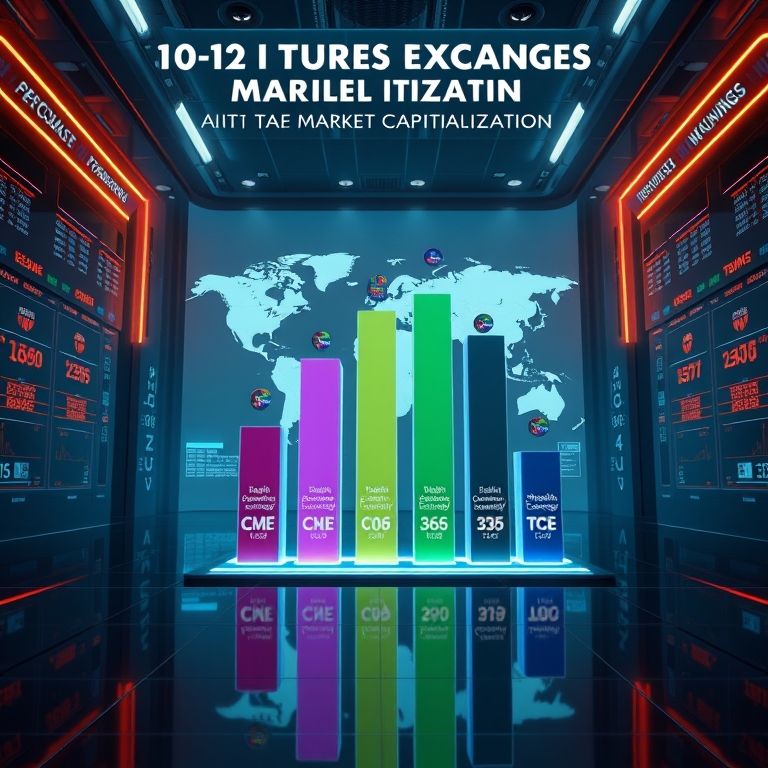What are the top futures exchanges by market capitalization?
What Are the Top Futures Exchanges by Market Capitalization?
Intro
When traders talk about futures, they often chase liquidity, contract variety, and speed. But behind the scenes, the strength of the parent company matters—its balance sheet, clearing capabilities, and global reach. As markets tilt toward multi-asset trading—forex, stocks, crypto, indices, commodities, options—the big exchange operators sit at the center. They aren’t just venues; they’re risk managers, technology hubs, and gateways to Web3 and AI-driven strategies. Here’s a practical tour of the leading futures exchanges by market capitalization and what that means for traders like you.

Top players by market capitalization
- CME Group: The dominant force in US futures, CME Group combines deep liquidity with robust clearing and a broad product suite. Its market cap has positioned CME as a cornerstone for hedgers and speculators alike. Trade ideas multiply here, from interest-rate futures to a growing set of crypto-linked products. Slogan: Trade futures with confidence on the backbone of a market leader.
- Intercontinental Exchange (ICE): Beyond being a gigantic exchange operator, ICE runs multiple futures venues and a global clearing network. Its scale supports cross-border hedging and spread trades that rely on reliable settlement and risk controls. Slogan: Powering decisive risk management around the globe.
- Hong Kong Exchanges & Clearing (HKEX): HKEX’s LME metals platform and broader derivatives footprint push it onto the list, reflecting Asia-Pacific demand for metal futures, stock-index hedges, and currency pairs. Market breadth plus cross-border access makes HKEX a compelling choice for Asia-led strategies. Slogan: Where Asian liquidity meets global innovation.
- Deutsche Börse (Eurex): Eurex, a key European derivatives hub, benefits from Deutsche Börse’s network and regulatory footprint. Its futures and options on fixed income and equities appeal to institutions seeking stable, compliant clearing in a deep liquidity pool. Slogan: Precision trading, trusted by Europe and beyond.
- CBOE Global Markets: Known for options leadership, CBOE’s expansion into futures complements its risk management toolkit. It serves traders seeking well-regulated venues with clear margins and strong market data. Slogan: Flexibility, transparency, and edge in every contract.
Key features that matter for multi-asset trading
- Scale and liquidity: Big players attract more counterparties, tighter spreads, and more reliable fills across asset classes—forex, indices, commodities, and, increasingly, crypto futures. A liquid hub lets you implement trades without overpaying on slippage. Slogan: Liquidity that keeps your strategy moving.
- Clearing and risk management: Central clearing reduces counterparty risk and provides uniform margin treatment. Efficient margining, default funds, and robust settlement curves give you a steadier risk profile during volatility. Slogan: Clearer risk, stronger confidence.
- Product breadth and access: Multi-asset access in one venue simplifies hedging and portfolio protection. From rate futures to metals and crypto-linked products, the ability to cross-hedge in a single ecosystem can be a game changer. Slogan: Diversify with one gateway.
- Tech and security: High-performance matching engines, disaster recovery, and cyber resilience matter when you’re executing complex spreads or high-frequency scalps. Traders stay because the platform stays. Slogan: Built to perform, engineered to endure.
DeFi, Web3, and the evolving landscape
The rise of decentralized finance and AI-driven tools is nudging traders toward more transparent pricing, lower friction, and smart-contract-based risk management. Centralized exchanges offer reliability, while DeFi futures—perpetual contracts and cross-chain oracles—promise greater composability and open access. Yet they bring challenges: regulatory clarity, capital efficiency, and smart contract risk. For now, the mainstream futures venues balance speed and safety with clear compliance frameworks, while Web3 innovations push the edge toward more transparent pricing and innovative hedging products.
Future trends and tips for traders
- AI-driven insights: Expect smarter volatility forecasting, enhanced risk controls, and automated hedging suggestions that complement human judgment. Combine AI signals with solid chart analysis to avoid overfitting.
- Smart contracts and interoperability: As more assets move onto programmable rails, you’ll see tighter integration between data feeds, analytics, and execution—while keeping a wary eye on bridge risk and governance.
- Leverage and risk: Use conservative leverage, diversify across asset classes, and rely on robust risk controls. In volatile markets, diversification across futures, options, and spot overlays can reduce drawdown.
- Security and reliability: Favor venues with proven uptime, strong clearing, and transparent governance. Pair exchange data with trusted charting tools and risk dashboards to stay informed.
Conclusion
If you’re assessing where to place futures trades, market capitalization offers a proxy for scale, resilience, and ecosystem depth. The leading exchanges—CME Group, ICE, HKEX, Deutsche Börse, and CBOE—portend a durable mix of liquidity, clearing strength, and product breadth across forex, equities, indices, commodities, and beyond. Embrace multi-asset access, combine traditional risk controls with AI-driven insights, and watch for DeFi experiments that could reshape how we hedge tomorrow. Promising years lie ahead for smarter, safer, and more connected futures trading.
宣传口号
- Trade smarter, hedge bigger, on the backbone of the world’s leading futures platforms.
- Where liquidity meets security and innovation—your edge in multi-asset futures.
- Power your risk management with a platform built for today and ready for tomorrow.